Joosten Mueller
Joosten Mueller, M.A., is a PhD Candidate in the Department of Art History and Material Culture at the University of Groningen, as well as in the Department of Art and Design at HfK Bremen. His research explores the history, epistemology, and materiality of objects in science. His applied work primarily focuses on developing interactive, sensory exhibition and communication formats.
His doctoral project, 'Cell Artefacts. Iconography of Cells in Science Communication,' explores the history, present, and future perspectives of cell visualizations in the context of science communication and education. Supervisors: Prof. Dr. Ann-Sophie Lehmann (University of Groningen), Prof. Dr. Annette Geiger (HfK Bremen), Prof. Dr. Andrea Sick (HfK Bremen, 2020 - 2023)
RESUME
Resume
Since 2024
Curatorial Research Assistant, DSM, German Maritime Museum Bremerhaven, Leibniz Institute for Maritime History
Since 2024
Executive Director, DGGTB, German Society for the History and Theory of Biology
2023 - 2024
Junior Researcher, University of Groningen, Faculty of Arts, Art History and Material Culture
June 2023
Visiting Researcher, Humboldt-University of Berlin, Institut für Biologie, AG Lehr- Lernforschung & Fachdidaktik Biologie
April 2023
Artistic-Research Residency, GAK Gesellschaft für Aktuelle Kunst Bremen e.V.
2022-2024
Principal Investigator, Research Project ‘Artefakte jenseits von analog und digital’
2021 - 2023
Research Assistant, University of the Arts Bremen, Department Art & Design
Since 2021
Lecturer, University of the Arts Bremen, Department Art & Design
Since 2020
PhD Candidate, University of Groningen, Art History and Material Culture / University of the Arts Bremen, Art & Design
2020 - 2024
Research Fellow of the University of the Arts Bremen
Since 2019
Interdisziplinäres Designlabor - Agentur für wissenschaftliches Kommunikationsdesign
[Dalila Maganinho / Joosten Mueller GbR]
2013-2017
Master of Arts, Integrated Design, University of the Arts Bremen
2010-2013
Bachelor of Arts, Integrated Design, University of the Arts Bremen
Publications
[researchgate.net] [academia.edu] [The Dynamic Archive]
2024
Reaktionsräume. Objektforschung zwischen Objektbiographie und künstlerischer Intervention, in: Seidl, Ernst; Steinheimer, Frank; Weber, Cornelia (Hg.): Wege der Objekte, Junges Forum für Sammlungs- und Objektforschung Bd. VIII, 2024, in peer-review [article]
2024
Die Visuelle Sprache der Wissenschaft: Designer:innen als Vermittler, in: Chambers, Sive M.; Geisler, Rosanna; Mueller, Joosten (Hg.), Visualizing Science. Visuelle Konzepte der Zelle zwischen Design und Wissenschaft, The Dynamic Archive, Bremen: Hochschule für Künste Bremen [article]
2024
“How to Make a Cell Model COOKIE“ Zellmodelle im Spiegel digitaler „DIY“-Modellbaubewegungen, in: Deutsche Gesellschaft für Geschichte und Theorie der Biologie (Hg.): Biologie im Zeitalter der digitalen (R)Evolution, Verhandlungen zur Geschichte und Theorie der Biologie Bd. 25, Arnstadt: THK-Verlag, 2024 [article]
2022
The Practice of Copying Educational Science Models: An Artistic Research Perspective, in: ISCSS Conference Proceedings 2021, https://doi.org/10.35603/sws.iscss.va2021/s08.54 [article]
2021
The Fried-Cell Model. Object Lessons on Eggs, Fried-Eggs and Cell Models, in: The Dynamic Archive, https://doi.org/10.26017/tda-578 [article/method]
2021
Break the Mould. Questioning Popular Models in Science Education, in: The Dynamic Archive, https://doi.org/10.26017/tda-567 [article/method]
2021
Modeling Competence: Practice-Based Research between Design, Architecture, Science History and Biology Didactics, in: Sanderson, L. / Stone, S. (Eds.): Teaching-Learning-Research: Design and Environments, AMPS Proceedings Series 22.2, Manchester School of Architecture [article]
2021
Zur piktogrammatischen Darstellung eines Virus - Zwischen wissenschaftshistorischer Spurensuche und modellexperimenteller Wissensgenerierung, in: Geiger, Annette / Holtschke, Bianca (Eds.): Piktogrammatik: Grafisches Gestalten als Weltwissen und Bilderordnung, Transcript [article]
2020
Die Materielle Kultur der Wissenschaft. Zur Forschung mit dem Nachlass von Ingrid Köller, [Derwanz, Heike / Mueller, Joosten], in: Derwanz, Heike / Mühr, Patricia (Eds.): Geldkatzenwäsche. Kommentierte Neuherausgabe der Schriften Ingrid Köllers zur Didaktik textiler Sachkultur. Carl von Ossietzky Universität Oldenburg [article]
2019
Picornaviridae – Zum Gestalten von Modell- und Visualisierungskonzepten in der Virologie. Humboldt Universität zu Berlin [book]
Invited Lectures/ Conference Papers
2024
‘Wie denken wir Zellen? Interaktive Biologievermittlung im Ausstellungskontext.’ Alter Wein in neuen Schläuchen? – Tendenzen und Trends in der Geschichte der Biowissenschaften, 32. Jahrestagung Deutsche Gesellschaft für Geschichte und Theorie der Biologie, Friedrich-Schiller-Universität Jena, Vortrag angenommen
2023
‘Reaktionsräume. Objektforschung zwischen Objektbiographie und künstlerischer Intervention.’ Wege der Objekte, Junges Forum für Sammlungs- und Objektforschung, Deutsches Schifffahrtsmuseums/ Leibniz-Institut für Maritime Geschichte Bremerhaven
2022
‘Practice-Based Research between Design and Science or: How Artistic Research can Contribute to Science Education'. Drawing and Art in Science Teaching and Learning. ScienceHumanities Research Group, Department of Teacher Education, NTNU Norwegian University of Science and Technology
2022
‘How are we Picturing Cells? Historical Review - Design Perspective.’ Objects of Understanding: Historical Perspectives on Material Artifacts and Practices in Science Education, Conference, Europe University of Flensburg
2022
'Modellieren als epistemische Praxis: Berührungspunkte von Design und Naturwissenschaft.' [Mueller, Joosten / Engelschalt, Paul / Penzlin, Johanna / Upmeier zu Belzen, Annette] 30th annual conference ‘Deutsche Gesellschaft für Geschichte und Theorie der Biologie’, Friedrich-Schiller University Jena
2022
‘Visualizing Cells.' Lecture Performances by the Candidates of the Binational Artistic-PhD Programme / HfK Bremen, GAK Gesellschaft für Aktuelle Kunst, Bremen
2021
‘The Practice of Copying Educational Models: An Artistic Research Perspective’, SWS Conferences on Social Sciences (ISCSS), “When Science meets Art” SWS Vienna ART Scientific Sessions, Section Education & Education Research
2021
‘"How to Make a Cell Model Pizza!" Biologische Zellmodelle im Spiegel digitaler “DIY”-Bewegungen.' 29th annual conference ‘Deutsche Gesellschaft für Geschichte und Theorie der Biologie’: Biologie im Zeitalter der Digitalen (R)evolution, Friedrich-Schiller University Jena
2019
‘Modell und Visualisierungskonzepte in der Virologie.’ Jahrestagung, Exzellenzcluster Matters of Activity/ Bild Wissen Gestaltung. Ein interdisziplinäres Labor, Humboldt-Universität zu Berlin
2019
'Eine Frage der Darstellung? Virenmodelle auf dem Prüfstand.‘ Piktogrammatik. Grafisches Gestalten als Weltwissen und Bilderordnung, Interdisciplinary colloquium, University of the Arts Bremen
2018
‘Geodätische Kuppeln und Virusstrukturen – Modelle und Analogien früher Virusforschung.’ Lunchtalk, Excellenzcluster Bild Wissen Gestaltung. Ein interdisziplinäres Labor, Humboldt-Universität zu Berlin
Exhibitions
2024
‘The Glass Record', Documenting in Artistic Research, GAK Gesellschaft für Aktuelle Kunst Bremen, 3rd - 21st of April 2024
2023
‘Cell Explorers’, Pop-Up Exhibition, LNDW Lange Nacht der Wissenschaften Berlin, Humboldt-Universität zu Berlin, 17th of June 2023
2023 - 2024
‘Wie denken wir Zellen?’, Humboldt-University of Berlin, Institute of Biology, Teaching and Learning Research Biology, 24th of April - 30th of November 2024
2023
‘Reaktionsräume', Artistic Research Residency at GAK Bremen, 1st - 16th of April 2023
2022-2023
‘How are we Picturing Cells?’, Annual Science Exhibition, Haus der Wissenschaft Bremen, 9th of Nov. 2022 - 18th of Feb. 2024
2022
‘Artistic Research between Theory and Practice', Exhibition of the Artistic PhD-Program in cooperation with GAK Bremen, MS Dauerwelle, 14th - 19th of June 2022
2017
‘Viren zum Anfassen! Modelle ikosaedrischer Viren in der Wissenschaft', Hochschultage 2017, Nominated for the ‘University Award 2017', Hochschule für Künste Bremen, 11th - 12th of February 2017
2016
‘Picornaviridae – Struktur und Geometrie ikosaedrischer Viren’, Master Exhibition, Hochschule für Künste Bremen, 12th - 16th of September 2016
2016
‘Viren und Geometrie’, Pop-Up Exhibition, Design Studies on Visual Science Communication, Hochschultage, Nominated for the ‘University Award 2016’, Hochschule für Künste Bremen, 06th - 07th of February 2016
Teaching
2022 / 2023
VISUALIZING SCIENCE. Workshop, University of the Arts Bremen, Department of Design
2021 / 2022
STRUCTURES OF LIFE—Visualizing Knowledge Between Design and Natural Science. Workshop, University of the Arts Bremen, Department of Design
Fellowships
Society for Artistic Research SAR
German Society for Design Theory and Research DGTF
Society for University Collections GfU
German Society for the History of Medicine, Natural Science, and Technics GWMT
German Society for the History and Philosophy of Biology DGGTB
PORTFOLIO
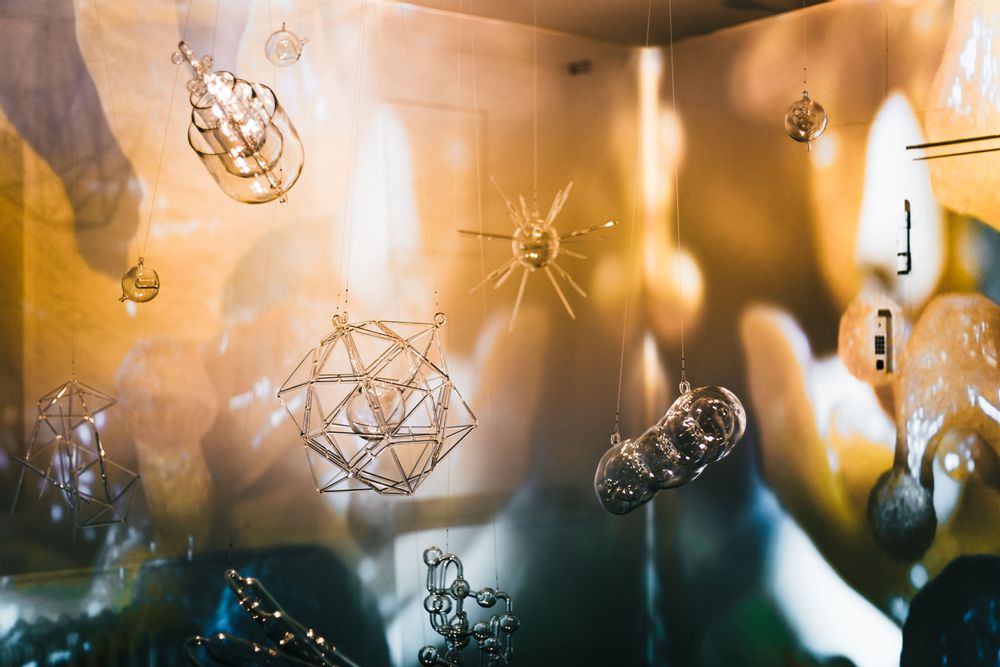
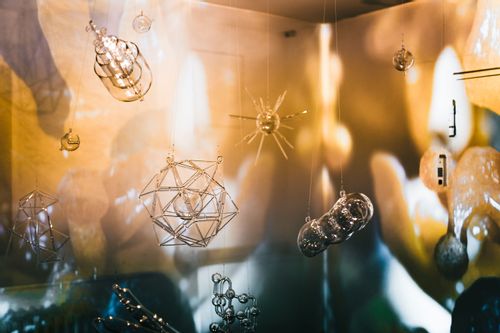
Immersive Installation
Artistic-Research Residency, GAK Bremen, 2023
The German term 'Reaktionsräume' refers to cellular compartments where biochemical reactions occur (Horn et al.: 2020). Glass apparatus in laboratories can also be seen as closed crystalline rooms for controlled chemical reactions. The use of "glass" as a material and metaphor plays a crucial role in communicating scientific knowledge, symbolizing the discovery of hidden worlds.
Joosten Mueller's dissertation project investigates three artifacts from the late 20th century, representing a "glass or crystalline cell," exploring their biographies and challenges in post-educational contexts: aging, obsolescence, silence, invisibility, decay, and disappearance. The installation creates a crystalline "Reaktionsraum" exhibition, where historical artifacts converge, inviting the rediscovery and reenactment of past settings.
Funded by: Bremen-Fonds „Gesellschaft und Individuum im digitalen Wandel".
Glass objects
Joosten Mueller (design), craftet by Roswitha Krebs-Goldbecker, Scientific Glass Blowing Workshop, University of Bremen
Soundremix
Joosten Mueller. 1: Gläserne Zelle (deutsch), Magnettonband (1989), Stiftung Deutsches Hygienemuseum Dresden, DHMD 2018/532; 2: Sound of Healthy Yeast Cell, Prof. Dr. James Gimzewski, youtube.de/P3cTxdGj2zl.
Video
Joosten Mueller & Jimi Liu (editing) in cooperation with the Institute for Biophysics, Radmacher Lab, University of Bremen. Macroscopic video of an intestinal cell model (Übersee-Museum Bremen).
Booklet
Joosten Mueller (concept) & Dalila Maganinho (graphic / typography)
Photo: Jimi Liu

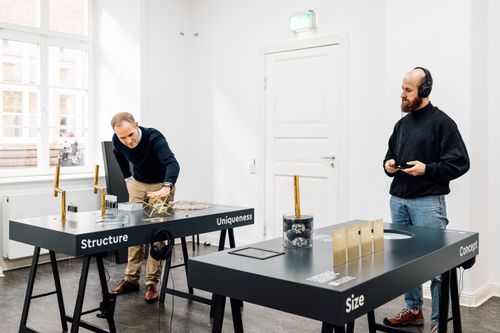
Interactive Sensory Exhibition
Haus der Wissenschaft Bremen, 2022/23; Humboldt-University of Berlin, 2023/24
Cells are the smallest living units of all organisms. They represent a universal commonality not only among all humans but among all living things on this planet. But what image comes to mind when we think about cells? And how do scientific, educational, and artistic visualizations shape this image?
The exhibition explores themes such as cell size, popular visualization concepts, cell shape, structure, dynamics, uniqueness, and diversity. Six interactive stations invite for material and sensoric exploration.
Exhibition Website
DATES
Humboldt-Universität zu Berlin, Institut für Biologie
24.04.2023 - 30.11.2024
Lange Nacht der Wissenschaften Berlin
17.06.2023 (Pop-Up Exhibition)
Haus der Wissenschaft Bremen
09.11.2022 - 18.02.2023
Curation / Concept / Scientific & Artistic Direction: Joosten Mueller
Graphic Design / Layout : Dalila Maganinho
Animation: Anika Falke
Narrator: Marvin Weiß
Photo Portfolio: Lukas Klose
Photo & Videography Website: Jimi Liu
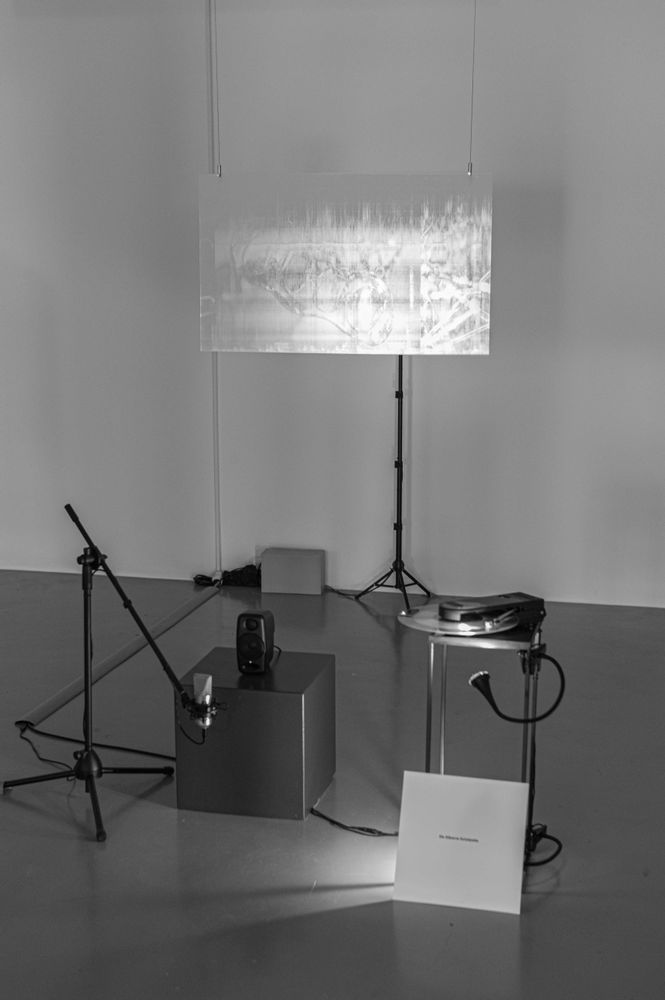

Interactive Multimedia Installation
Documenting in Artistic Research
GAK Gesellschaft für Aktuelle Kunst Bremen, 3rd - 21st of April 2024
The Glass Record questions whether the experience of artistic work can truly be documented. This installation features a transparent record with audio and visuals from the opening of the Reaktionsräume exhibition at GAK Bremen. As the record spins, a microphone with a spectrum analyzer captures the sound and transforms it into evolving visual projections, influenced by visitor interactions and environmental noise. This interplay blurs the boundaries between past and present, as well as between documentation and experience.
Photo: Stefan Upmeier zu Belzen
Record Production: Dr. Dub Vinyl Recording Service
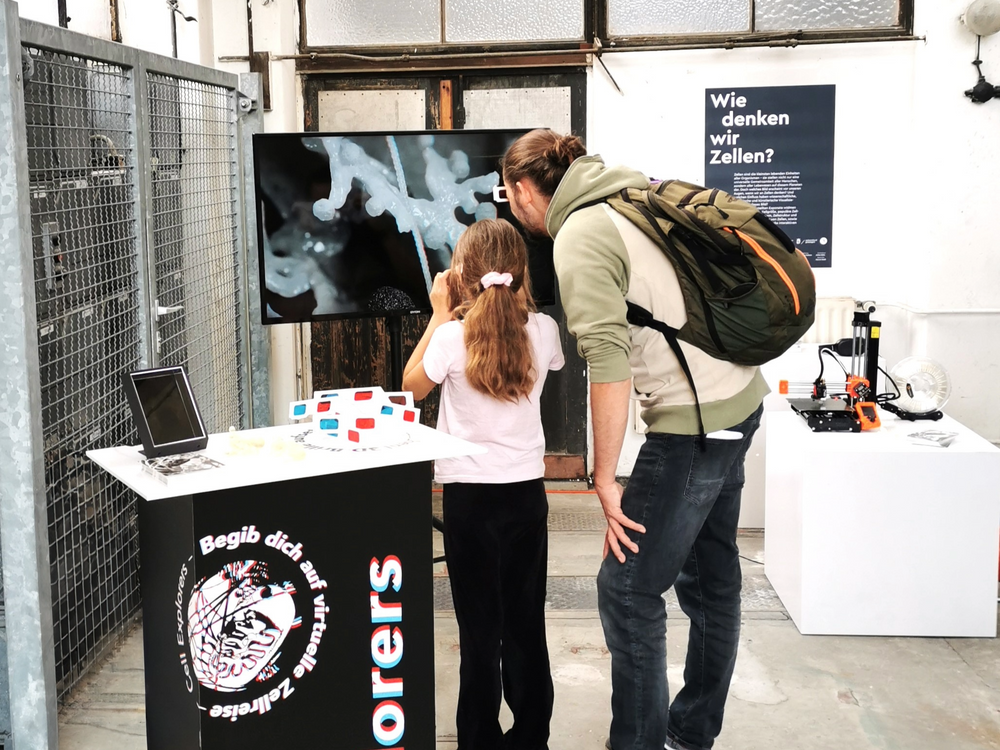
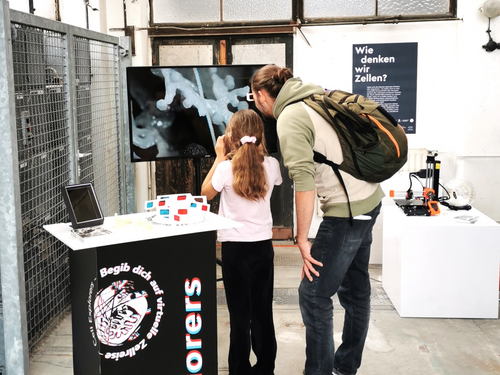
Hybrid Pop-Up Exhibition
LNDW Lange Nacht der Wissenschaft Berlin, 2023
At Berlin's Long Night of Science, our pop-up exhibition brought a neglected former museum object back to life, making it remotely accessible through hybrid technology. Visitors explored a virtual "3D flight through the cell," interacted with 3D-printed fragments, and experienced a hologram of a cell model from the late 20th century.
The exhibition is part of the research project "Artifacts beyond Analog and Digital".
Curation / Concept / Scientific & Artistic Direction: Joosten Mueller
Graphic Design Concept : Dalila Maganinho
Educational Support: Paul Engelschalt, Humboldt-University of Berlin
Photo: Joosten Mueller
Research Project
University of the Arts Bremen, University Bremen, Humboldt-University of Berlin, 2022-2024
The primary focus of the research project "Artifacts beyond Analog and Digital" is the study of an object representing a secretory intestinal cell from the Übersee-Museum Bremen. The project aims to improve both physical and content-related access to the model by developing hybrid formats that allow for location-independent visibility and sensory exploration, while also recontextualizing its history.
Funded by: Bremen-Fonds „Gesellschaft und Individuum im digitalen Wandel".
Project Website
Principal Investigator:
Joosten Mueller
Hochschule für Künste Bremen & Universität Groningen
Scientific Supervision:
Prof. Dr. Manfred Radmacher
Universität Bremen
Educational Supervision:
Paul Engelschalt &
Prof. Dr. Annette Upmeier zu Belzen
Humboldt-Universität zu Berlin
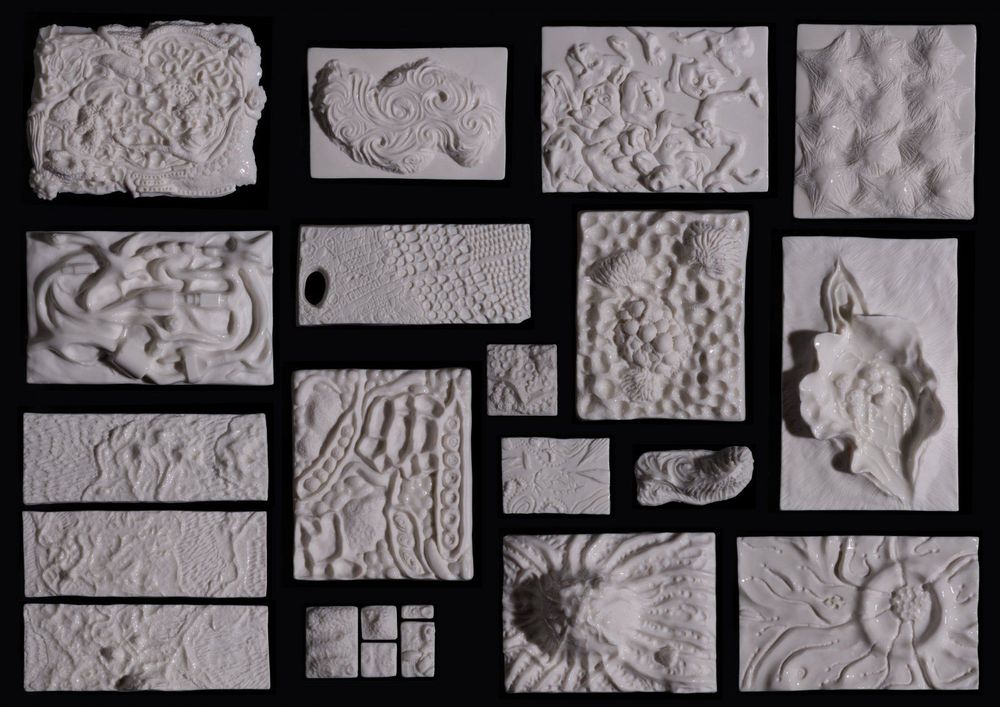

Visualizing Knowledge Between Design and Natural Science
Teaching Concept
Integrated Design BA, University of the Arts Bremen, 2021/22
In the workshop "STRUCTURES OF LIFE," 14 students from the Department of Design explored visualizing biological cell phenomena. They began by modeling their perceptions of cellular structures and then contextualized their ideas with common educational cell models. The students focused on two evolving concepts: first, that visual conceptions of cellular structures are often influenced by didactic, scientific, and artistic models rather than the underlying phenomenon itself, and second, that contemporary cell models typically depict cells as static entities rather than dynamic ones revealed by modern molecular biology. Working within this framework, participants created artistic-scientific educational artifacts in porcelain to visualize cells beyond standardized ideas, resulting in a collective assemblage of alternative cell models. These models, representing diverse designs, scales, structures, and functions, offer the opportunity for examination, comparison, and discussion.
Photo: Joosten Mueller
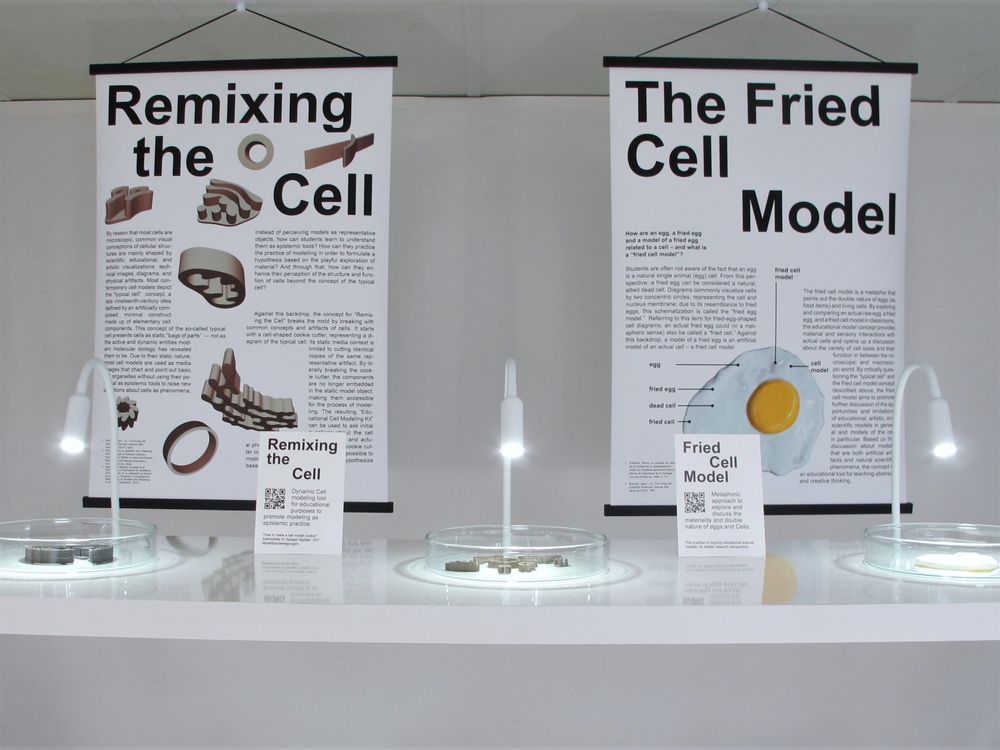
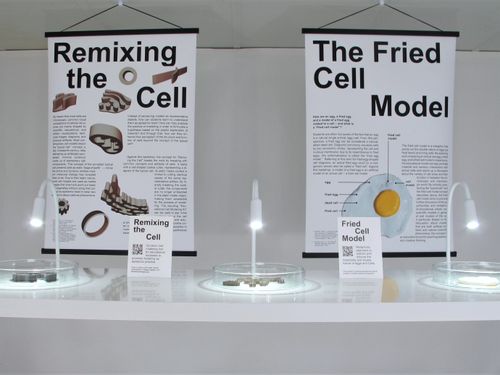
Research Exhibition
University of the Arts, MS Dauerwelle, 2022
Under the theme of "Showcasing Artistic Research between Theory and Practice," the exhibition "Halbe-Halbe" unveiled the initial outcomes of the Artistic PhD Program at HfK Bremen, in collaboration with GAK Bremen, at MS Dauerwelle.
Joosten Mueller's research, featured at the exhibition, investigated the question of how we comprehend cells through educational, scientific, and artistic visualizations. The exhibition presented selected theoretical and material approaches from Mueller's research and design practice.
Exhibition: Joosten Mueller
Graphic & Typography: Dalila Maganinho
Photo: Joosten Mueller

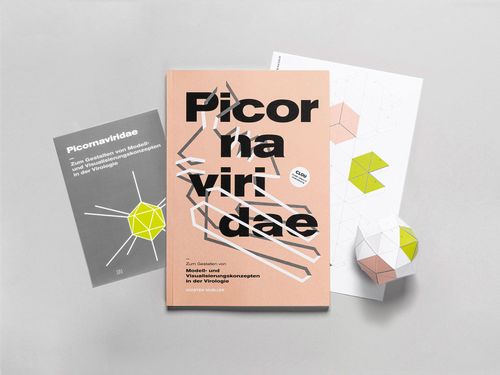
Zum Gestalten von Modell- und Visualisierungskonzepten in der Virologie
Book, CLOU Cluster Letters of Understanding 3
Image, Knowledge, Gestaltung. An Interdisciplinary Laboratory, Humboldt University of Berlin, 2019
The cluster of excellence 'Image Knowledge Gestaltung: An Interdisciplinary Laboratory' at Humboldt University of Berlin published Joosten Mueller's Bachelor Thesis as part of the publication series 'CLOU: Cluster Letters of Understanding'. The book included a card stock model as well as an educational table.
A digital version of the publication is available here.
Author: Joosten Mueller
Cover Design / Layout & Typography: Dalila Maganinho
Photo: Lukas Klose
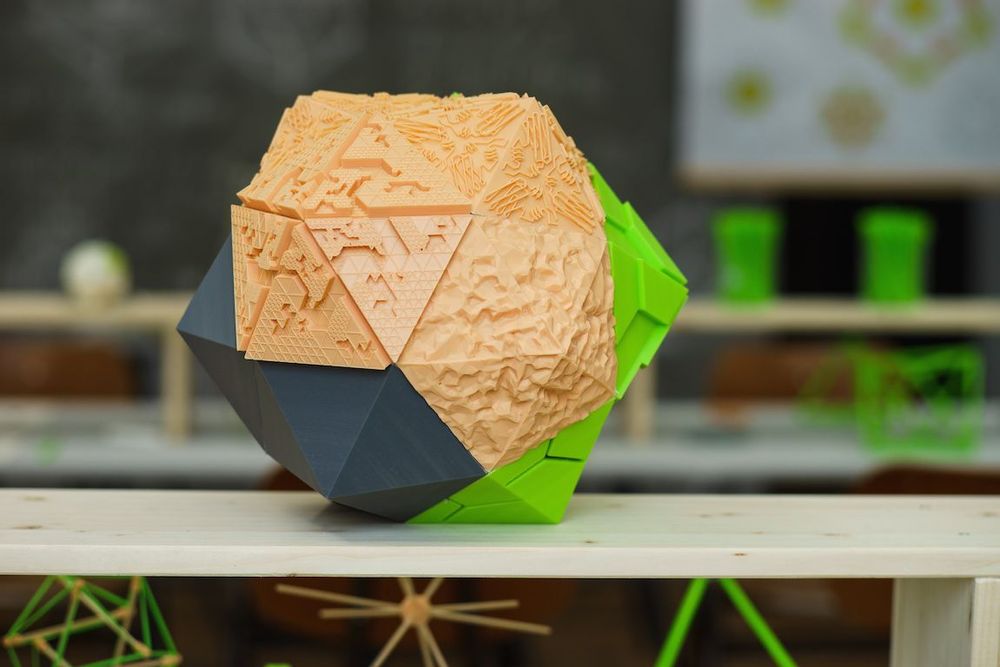

Master Exhibition
University of the Arts Bremen, 2016/17
The master's thesis explores the representability of virus structures, considering their geometric origins, with a focus on the picornavirus family (Picornaviridae) as a case study. It serves as an interface between science and design, highlighting the potential of design processes in interdisciplinary research. The thesis particularly emphasizes model-related teaching and learning processes, examining the challenges and limitations of models established since the 1960s, including questions about congruence between text and image and the inherent connection between theory and model-building.
Key questions addressed include: To what extent did theoretical model concepts influence early pioneers of virus research? What parallels exist between Buckminster Fuller's tensegrity, geodesic domes and virus structures?
The concept presented in the thesis consolidates various isolated visualization concepts, serving as an extended, cohesive (open access) model concept. It offers a cross-literature key to understanding and provides didactic tools to support a competence-based approach to modeling in teaching and research.
Photo: Lukas Klose
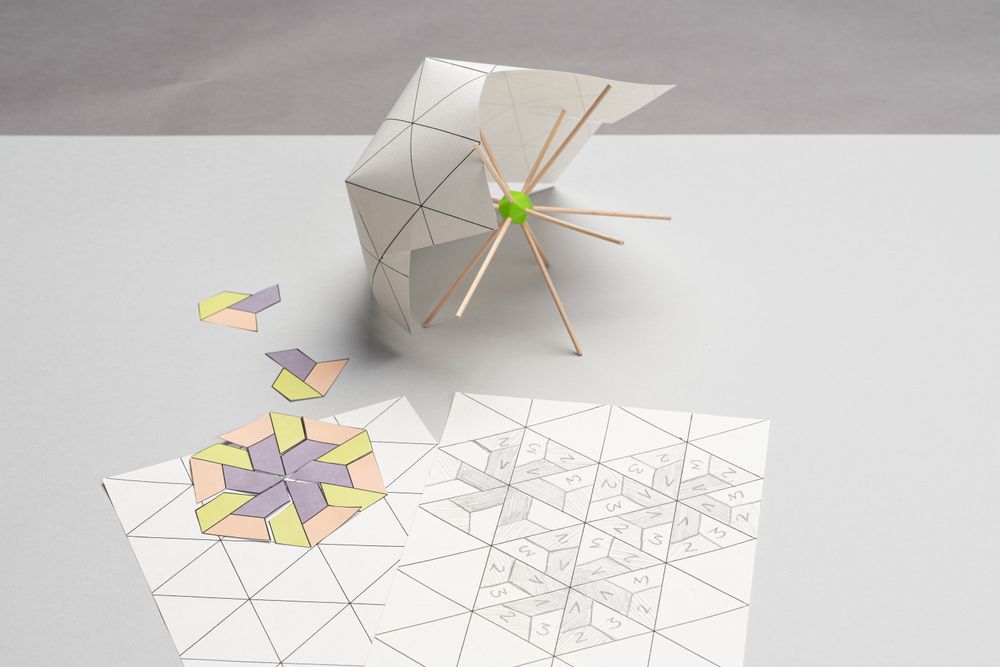
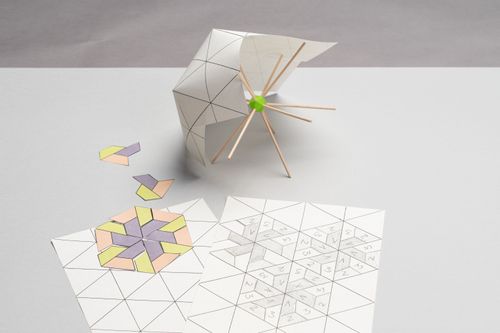
Workshop
Laboratory of Virus Research, University Bremen, 2018
In 2018, an experimental educational workshop concept focusing on modeling in science education, specifically as a form of practice- and design-based research, was developed and successfully executed with undergraduate biology students at the University of Bremen. This initiative was undertaken in collaboration with the Laboratory of Virus Research, led by Prof. Dr. A. Dotzauer. The workshop aimed to explore how design practices of modeling could enhance critical thinking and hypothesis formulation in a tangible manner. Students engaged in solving geometrical tasks in three dimensions, as well as engaging in the methods of historical virologists to decipher the underlying mechanisms of constructing icosahedral virus structures.
The published documentation of the workshop is to be found here.
Photo: Lukas Klose